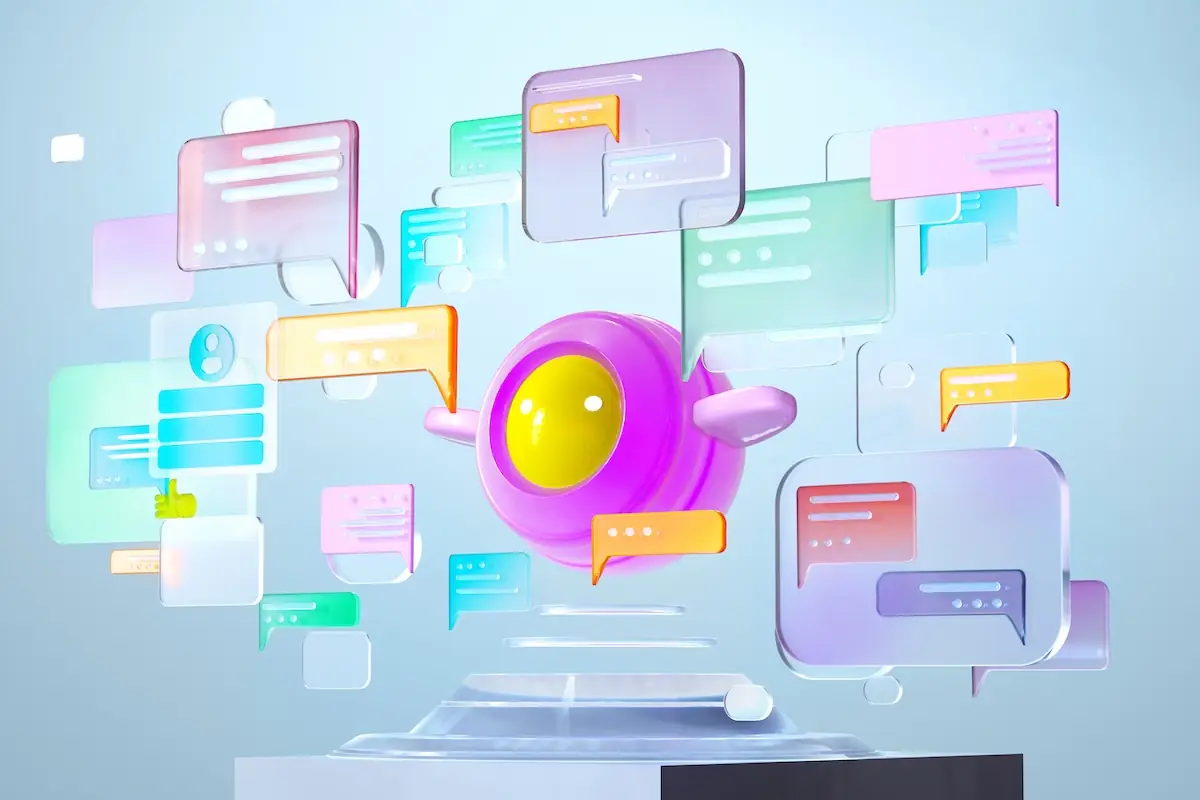Gen AI or Traditional AI: When to Choose Each One
Nick Schenone | February 6, 2025
When it comes to leveraging AI to capture business value, it’s worth asking, “what kind of AI do we need exactly?” There are significant differences between the methodologies collectively referred to as AI. While 2024 might have almost convinced us that gen AI is the end-all-be-all, there is also what’s sometimes called ‘traditional’ AI, deep learning, and much more.
The question is: how do you decide when to use traditional AI, which excels in structured data and predictive modeling, versus generative AI, which shines in creating new content and enhancing human-like interactions? Choosing the right type of AI for your specific use case is critical to maximizing value, minimizing risk, and ensuring sustainable growth.
In this blog, we’ll explore the economic potential of generative AI, discover its transformative capabilities across industries, and compare it to the applications of traditional AI. By the end, you’ll have a clear roadmap for identifying when to lean on gen AI and when to choose traditional AI to achieve your business goals.
The Potential Economic Value of Gen AI
The McKinsey report “The economic potential of generative AI: The next productivity frontier” estimates that generative AI has the potential to add $2.6 trillion to $4.4 trillion to the global economy. These sums increase the impact of all AI by an astounding 15 to 40 percent. In addition, the report states, this impact could even double if gen AI is extended beyond the analyzed use cases.
The impact of generative AI is not limited to a certain industry sector. From banking to high tech to life sciences to consumer goods to education, gen AI can change work as we know it, augmenting employee capabilities and adding new ones to the value chain.
For example, generative AI has the potential to automate 60-70% of employee activities, thanks to the technology’s ability to understand natural human language. This is not limited to what is colloquially known as “busy work”, but also knowledge work that tends to attract employees with high educational requirements. Per McKinsey, “combining generative AI with all other technologies, work automation could add 0.5 to 3.4 percentage points annually to productivity growth.”
“This is just the beginning. Generative AI will reshape private markets and have a transformative impact on firms. Companies that rewire their operations will gain a sustainable competitive advantage,” says Ben Ellencweig, McKinsey Senior Partner and Global Leader of QuantumBlack (AI by McKinsey) Alliances and Acquisitions.
Should Your Organization Implement Gen AI?
Given these jaw-dropping predictions, it’s no wonder organizations are running to implement gen AI into their operations. Obviously, we are also big believers in the value of gen AI. Yet, when looking at your business use cases, it's important to distinguish between gen AI use cases and traditional AI ones.
Why the Choice Between Gen AI and Traditional AI Matters
Understanding whether your business use case is gen AI or not will have an impact on:
- Model Choice and AI Architecture - Traditional AI typically involves predictive or classification models based on structured data. In contrast, Gen AI involves complex architectures and LLMs that generate new content (text, images, code). This requires different training, evaluation and optimization techniques.
- Data Requirements - Traditional AI models often need labeled datasets and focus on learning from historical data. Gen AI models, however, require vast amounts of high-quality, often unsupervised data to learn from and to generate meaningful outputs. For data scientists, this alters how they collect, clean and manage data, impacting the pipeline and the workflow.
- Ethical and Bias Considerations - It’s important to pay special attention to ethical concerns when working with Gen AI. Since LLMs can create new content, they’re more prone to generating biased, harmful, or inaccurate outputs, increasing the need for guardrails.
- Investment and ROI - Gen AI typically requires large initial investments in infrastructure, like GPUs, talent and data. Organizations need to weigh these investments against the ROI and decide how to allocate resources and prioritize AI projects.
Recommended Gen AI Use Cases
McKinsey finds that approximately 75% of gen AI use cases fall into one of four areas:
- Customer operations, e.g supporting interactions with customers through smart agents and co-pilots
- Marketing and sales, e.g creating content like ads and scripts, graphics and music, as well as personalizing recommendations
- Software engineering, e.g writing or debugging code
- Product delivery
Spotlight: Customer Operations
Generative AI can improvise customer experience and agent productivity by enhancing agent skills and providing digital self-service. For example, through chatbots that provide personalized responses to customer queries, retrieving customer data during contact, reducing response time with real-time assistance and customized offerings that increase sales.
As discussed, the value of gen AI is not limited to certain industries. Therefore, these four use cases can be implemented across verticals. For example:
Financial services
McKinsey finds that generative AI could add $200 billion to $340 billion to the financial industry’s annual revenues. Use cases that can drive this additional productivity include:
- Gen AI agents handling common queries and automating complex service requests in real-time to streamline customer support
- Generating financial reports to enhance decision making
- Monitoring fraud to decrease risk
- Augment employee performance with a gen AI virtual expert that provides information, summaries, analyses, etc.
Retail
In the retail industry, gen AI can assist with activities such as:
- Hyper-personalized retail promotions for customers based on their past behavior and preferences
- Detailed customer personas, allowing retailers to target specific groups with personalized marketing and product offers.
- Visualizations of product and offerings
- Enhanced customer interactions through gen AI chatbots
Manufacturing
In manufacturing and enterprise operations, generative AI can help with activities that require natural language. For example:
- Assisting with machine breakdown through manual checking and making troubleshooting suggestions
- Analyzing procurement contracts
- Acting as a supply chain co-pilot, analyzing performance and scenarios
“These exciting endeavors are pushing the limits of what is possible, driving innovation and knowledge-sharing on a global scale, revolutionising industries across the entire value chain—and society at large,” says Alexander Sukharevsky, McKinsey Global Leader of QuantumBlack and Senior Partner.
Traditional AI and Traditional ML Use Cases
These are use cases where gen AI provides a groundbreaking approach. But gen AI is not a fit for every use case. Leveraging traditional AI or ML, opens up even more novel opportunities for innovations.
Traditional AI is especially valuable when dealing with structured data, predictive modeling and tasks that require interpretability and reliability. For example:
- Demand forecasting of supply chains to optimize inventory and reduce costs
- Predictive maintenance to identify manufacturing issues before breakdowns to reduce downtime
- Customer churn prediction to target customers at risk of leaving a service
- Credit scoring of financial applicants
- Disease prediction to support healthcare decision making
- Medical imaging to diagnose conditions through X-rays, MRIs and CT scans
- Network security to identify breaches and attacks
- Assisted and autonomous driving
- on and task automation for robotics
- Route optimizations for deliveries
- Adaptive recommendation engines
- Semi-automatic insurance claims review
- And more
Getting Started with AI Operationalization and De-risking
Whether you are introducing gen AI, traditional AI, or both, a strategic approach is key to success. Planning will ensure your models reach production and drive business value, rather than stay in the lab or in PoC stage.
Follow these steps:
1. Align AI Strategy with Value Creation - Ensure AI initiatives are directly tied to core business objectives. Prioritize projects that demonstrate clear ROI.
2. Build a Strong Data Foundation - AI depends on high-quality data. Invest in cleaning, organizing, and enriching your datasets.
3. Invest in Technology Infrastructure - Create a gen AI factory that can automate, scale and streamline data management, development, deployment and monitoring.
4. Drive a Culture of Innovation - Ensure senior leadership supports AI initiatives and is vocal about its importance in transforming the organization.
5. Governance and Risk Management - Establish guardrails to mitigate risks related to AI, such as bias, transparency and data privacy. Implement systems to track AI performance over time, ensuring models remain effective as business environments evolve.
“~90% of data science projects do not make it into production or usage in the field,” says Matthew Fitzpatrick Senior Partner at McKinsey & Company and Global Leader of QuantumBlack Labs. Following these steps is the solution to evolving from proof-of-concept AI to scaled and operationalized value.”
How to Operationalize and De-Risk Your Gen AI Applications with a Gen AI Factory
A gen AI factory is built of four pipelines that operationalize, automate and streamline the process. This includes:
- Data management - Ensuring data quality through data ingestion, transformation, cleansing, versioning, tagging, labeling, indexing, and more.
- Development - High quality model training, fine-tuning or prompt tuning, validation and deployment with CI/CD for ML.
- Application - Bringing business value to live applications through a real-time application pipeline that handles requests, data, model and validations.
- LiveOps - Improving performance, reducing risks and ensuring continuous operations by monitoring data and models for feedback.
In addition, it’s important to add guardrails that de-risk by addressing issues like security, compliance, privacy, hallucinations, toxicity, IP protection, and more.
To learn more about gen AI factories and how they work, click here.



